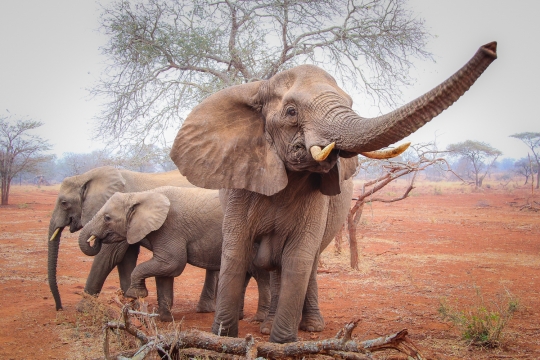Zimbabwe’s community-based conservation approach, which brings together peasant farmers in a tourism-focused approach to wildlife management, has not curbed poaching along the edge of protected areas as intended. And communities haven’t benefited as much from the income they hoped to gain from selling hunting licences, either.
However, the success of another conservation approach, by large commercial farmers also in protected areas, could give some solutions to improve conservation efforts while boosting the livelihoods for poor, rural communities in Zimbabwe.
This is the finding of a recent study by resource economists at the University of Cape Town’s (UCT’s) Environmental Policy Research Unit (EPRU), who compared the two conservation approaches along the edge of the Gonarezhou National Park (GNP) in south-eastern Zimbabwe.
EPRU researcher Herbert Ntuli notes in his overview of the study that Zimbabwean conservation authorities initiated the CAMPFIRE (Communal Areas Management Programme for Indigenous Resources) projects in the mid-1980s to try and curb wildlife poaching and address rural poverty amongst peasant farmers.
Many of these small scale farmers, living on the edge of protected areas, were at odds with the state’s efforts to conserve wildlife. Traditionally, these communities had hunted wildlife for the pot. But this, and human-wildlife conflict between farmers and animals roaming outside of the formal protected area, resulted in wildlife numbers dropping. Conflict with elephants, who roam into community farming areas particularly as crops ripen, is widespread.
CAMPFIRE was a way to show communities that they could benefit from wildlife conservation through ecotourism, and encourage them to treat wildlife as a valuable asset. It was also a way to boost farmer resilience in parts of the country that were agriculturally marginal.
Initially the programmes worked, and had good community buy-in. But Ntuli and associate professor Edwin Muchapondwa, who co-authored the study, say that with the pressure of land reform measures in the country, poaching increased and wildlife numbers began to drop again.
The two economists decided to compare one CAMPFIRE programme with another conservation initiative, run by large commercial farmers in a similar protected area.
A large number of private farmers in the Save Valley Conservancy pulled down the fences between their properties to allow game to roam freely between the park and their own farms. Managing game as a ‘common pool’ resource in this way allows wildlife to roam more widely, and lets the farmers benefit from economies of scale. The private landowners provide their own labour and capital, and also have autonomy in writing the conservancy’s rules.
However, while both initiatives are geared towards earning an income through selling hunting licences, the commercial farmers’ conservancy model proved much more effective. It earned them an income, has resulted in successful wildlife stewardship, and vegetation appears to have recovered as livestock has been replace by free-roaming game.
Comparing the two approaches, Ntuli and Muchapondwa found that what made the commercial conservancy model successful was that farmers were able to make their own decisions about how to manage the conservancy. They also had autonomy in terms of managing the finances and resources.
The CAMPFIRE project tended to be managed closely by state park authorities, who also kept 50% of hunting licence revenues, which limited the amount of money trickling down to community members.
Ntuli says that as a result of this study, they recommend that conservation authorities in Zimbabwe consider cutting the taxes that communities pay to the state and to private safari operators. They should also increase the penalties imposed on people who kill animals illegally. And they should allow communities to create their own democratic and well-structured institutions, such as management approaches and rules.
For more information on the research brief Managing Zimbabwe’s wildlife: a comparison of community and private conservation approaches contact Herbert Ntuli on NTLHER001@myuct.ac.za.
